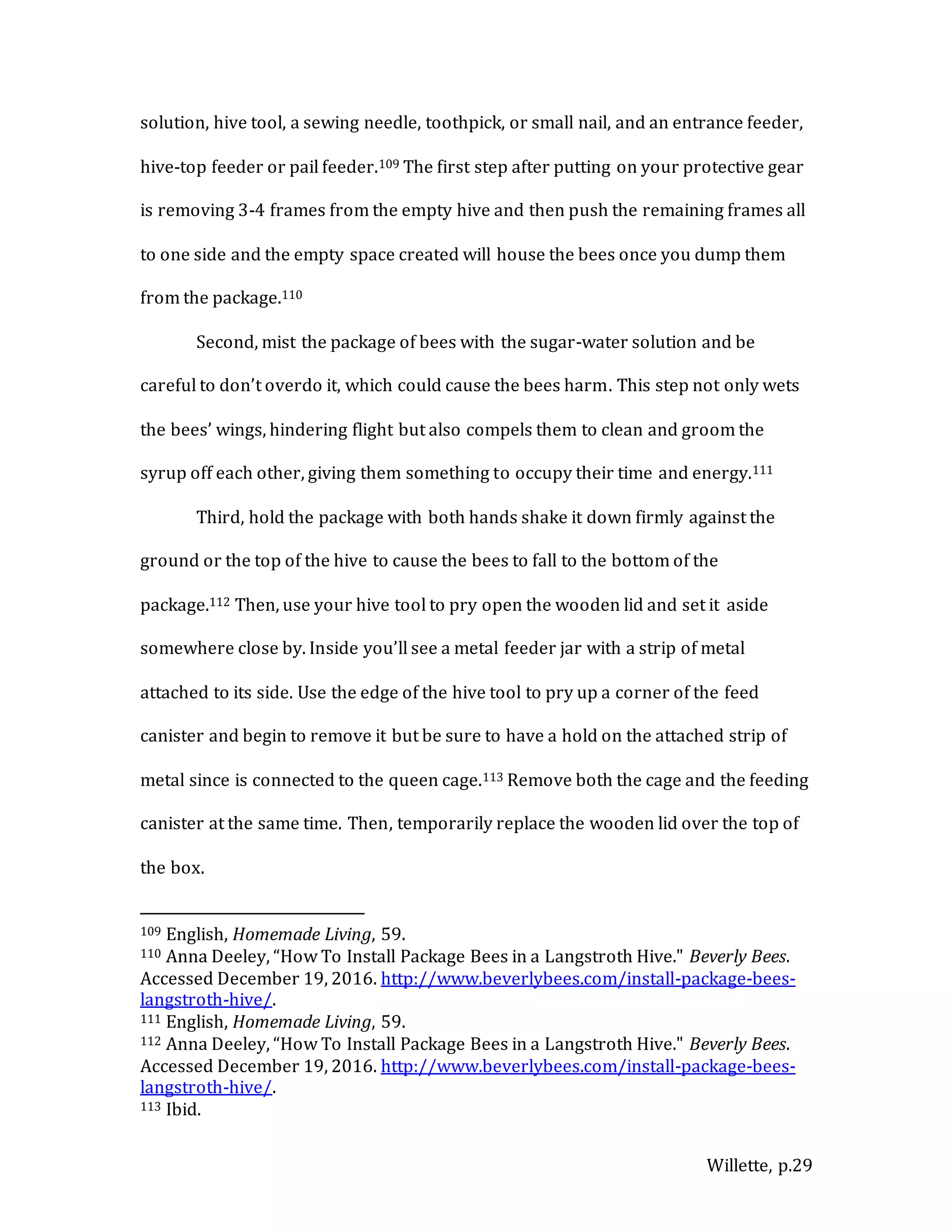This document provides an overview of honeybees and beekeeping. It discusses how honeybees are essential pollinators but are declining worldwide. Beekeeping helps increase honeybee populations and can be done as a hobby. The document outlines the history of beekeeping practices and equipment. It also discusses the basic equipment needed for beekeeping, including hive components and protective gear. Maintaining backyard beehives requires investment of space, time and money but provides benefits like honey and supporting agricultural pollination.

























































